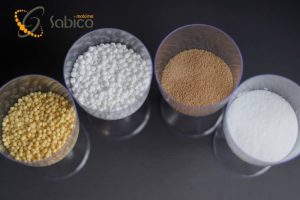
Polyethylene Compound in Iran
Introduction
In today’s rapidly evolving polymer industry, the selection of high-quality raw materials and specialized formulations plays a vital role in determining manufacturers’ success. One such advanced material is Yellow Compound 3840—an engineered polyethylene-based blend. Thanks to its bright yellow color, it not only enhances visual appeal but also delivers exceptional mechanical performance, especially for rotational molding applications.
Since the final product’s quality depends heavily on precision at each stage, this article provides a step-by-step overview of the production process of Yellow Compound 3840 and explains the significance of each phase in achieving a consistent and reliable outcome.
Polyethylene Compound in Iran
Production Stages of Yellow Compound 3840
1. Selection of High-Quality Raw Materials
The process begins with the careful selection of raw materials. The base polymer is a rotational molding-grade polyethylene with a suitable melt flow index (MFI). In addition, it is blended with additives such as yellow pigment, titanium dioxide (TiO₂), and thermal as well as UV stabilizers. These additives are chosen not only for performance but also to ensure long-term durability and visual consistency.
2. Weighing and Initial Mixing
Once the materials are selected, they are accurately weighed and mixed under controlled conditions using industrial mixers. The aim is to achieve a uniform dispersion of pigments and additives throughout the base resin. Consequently, this ensures that both color and mechanical properties remain consistent in the final product.
3. Extrusion and Melting of the Blend
Next, the mixed materials are fed into an extruder. At this stage, they are melted at a controlled temperature and passed through a screw system under high pressure. As a result, the combination of heat and mechanical force allows the pigment and additives to integrate fully with the polymer matrix, ensuring uniform composition.
4. Cooling and Pelletizing
After full melting and homogenization, the material exits the extruder and is immediately cooled. The cooled strands are then cut into granules or pellets. This step is critical because the uniformity of pellet size affects downstream processing efficiency and quality.
5. Milling into Fine Powder
Subsequently, the pellets are ground in specialized milling machines to produce a fine powder with particle sizes below 800 microns. This step is especially important, as particle size uniformity directly influences surface finish, moldability, and the structural integrity of rotationally molded products.
6. Quality Control and Final Testing
Finally, the compound undergoes rigorous quality control tests. Parameters such as density, color uniformity, MFI, elongation, tensile strength, impact resistance, and UV stability are carefully evaluated. Therefore, each batch is verified to meet industry standards before reaching end-users.
Polyethylene Compound in Iran
Physical and Mechanical Properties of Yellow Compound 3840
| Property | Typical Value | Unit | Test Method |
|---|---|---|---|
| Melt Flow Index (MFI) | 4 | g/10min | ASTM D-1238 |
| Density | 0.938 | g/cm³ | ASTM D-1505 |
| Mineral & Pigment Additives Content | <3 | % | – |
| Yellowness Index | -1 | – | ASTM E-313 |
| Whiteness Index | 60 | – | ASTM E-313 |
| Contamination Level | 5 | – | BP-137 |
| Vicat Softening Point | 115 | °C | ASTM D-1525 |
| Tensile Strength at Yield | 15 | MPa | ASTM D-638 |
| Elongation | 900 | % | ASTM D-638 |
| ESCR (Stress Crack Resistance) | 350 | hours | ASTM D-1693 |
| Impact Resistance | 18 | KJ/m² | ASTM D-6110 |
Advantages and Applications
Advantages
High Color Stability: The use of premium yellow pigment and titanium dioxide ensures a bright and durable color that resists fading due to UV exposure and environmental conditions.
Excellent Processability: The optimized melt flow index allows for ideal material flow during the rotational molding process, leading to easier processing and better mold fill.
Superior Mechanical Strength: With good tensile strength, very high elongation, and excellent impact resistance, this compound offers long-term durability in demanding applications.
Low Surface Contamination: Due to strict process controls, the compound has low levels of surface impurities, ensuring better appearance and product integrity.
Polyethylene Compound in Iran
Applications
Thanks to its balanced performance and vibrant appearance, Yellow Compound 3840 is ideal for a wide range of applications, including:
Water and fuel storage tanks
Chemical storage containers
Children’s playground equipment
Agricultural tools and equipment
Urban polymer parts such as planters and street furniture
Conclusion
The production of Yellow Compound 3840 reflects a well-orchestrated combination of material science, advanced manufacturing, and strict quality assurance. Not only does this compound provide a bright, uniform yellow color, but it also ensures superior thermal and mechanical properties that enhance the durability and functionality of molded products.
Moreover, its versatility across multiple industries—from agriculture to urban design—demonstrates how performance and aesthetics can be successfully integrated in modern polymer engineering. Therefore, the continued advancement of this industry will depend heavily on innovations like Yellow Compound 3840.